Hey there, growth enthusiasts!
Get ready to have your mind blown by the story of Zapier’s rise to unicorn status!
Zapier has soared from humble beginnings to a jaw-dropping $35M ARR, all thanks to its SEO-driven user strategy and other factors that we will discover in this article.
With 7.3 million monthly visitors, Zapier is proving that organic search is still alive and can bring mind-boggling growth.
So get ready to discover how this API solution has conquered the SaaS world and became the ultimate integration solution!
The Idea 

It’s 2011, and APIs are the talk of the town.
But for the average user, trying to connect different apps was like herding cats in a tornado!
This is when Wade Foster and Bryan Helmig, the founders of Zapier, entered the game and said, “Enough is enough; let’s make app integration a breeze!”
Their idea?
Create a user-friendly platform that connects all your favorite tools without the need for a PhD in coding.
And just like that, Zapier was born.
The Problem 
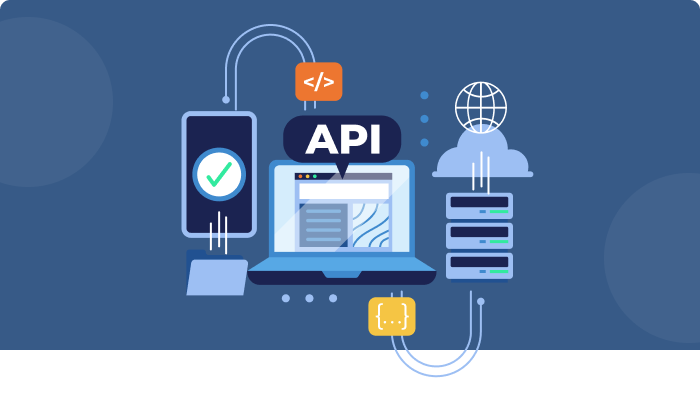
Before Zapier swooped in to save the day, trying to integrate different apps was like navigating a maze blindfolded.
Imagine this:
Countless hours wasted on coding custom integrations
Frustration levels through the roof as nothing seems to work
Productivity taking a nosedive due to app isolation
It was a world where apps just couldn’t play nice together, leaving users trapped in a digital prison of inefficiency.
But the real problem?
Non-techie people were left out in the cold, watching in despair as their tech-savvy peers worked their integration magic.
The MVP 
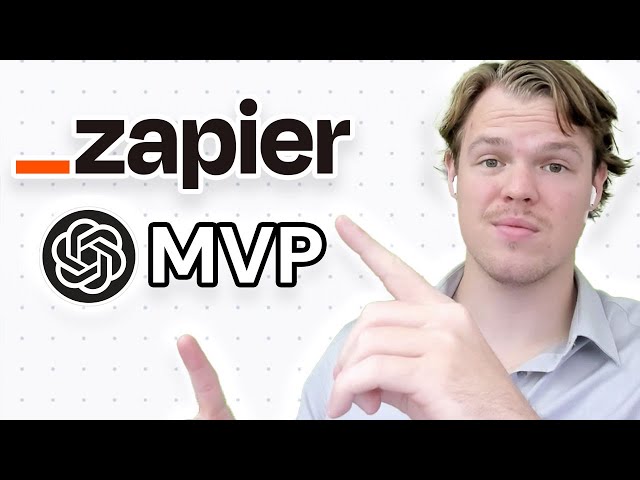
With just three key ingredients, Zapier created a recipe for success:
Pre-Built Templates: They offered ready-made workflows to get you started in a snap!
App Connections: Seamless integrations for all your favorite tools!
AI Automation: Everything works better with a pinch of AI!
But what made the difference was that Zapier made it all so easy; even a tech-phobic unicorn could do it!
No coding required, just a few clicks and *BAM!*
Your apps are talking, your workflows are humming, and the dev team is no longer staring you down!
The MVP proved that Zapier had cracked the code on making app integration accessible to mere mortals.
Product-Market Fit 
In their first year, Zapier attracted 10,000 users purely through word-of-mouth and organic search, a clear indication that they were addressing a real pain point.
But the real proof of PMF came in the following years.
By 2014, Zapier had integrations with over 250 apps and was experiencing a 30% month-over-month user growth.
Zapier’s obsession with user feedback fueled this rapid expansion.
They constantly monitored feature requests and iterated their platform to deliver the integrations and functionality their users asked for.
The results spoke for themselves.
In 2015, Zapier boasted an impressive 60% user retention rate, showcasing the lasting value users found in the platform.
But perhaps the most compelling evidence of PMF was Zapier’s revenue growth.
Their revenue skyrocketed 5x in 2014 and continued to double year-over-year, reaching a massive $50M ARR by 2018.
These numbers don’t lie – Zapier had found the perfect fit in the app integration market, and their journey to PMF showed the power of user-centric growth.
Positioning & Branding 
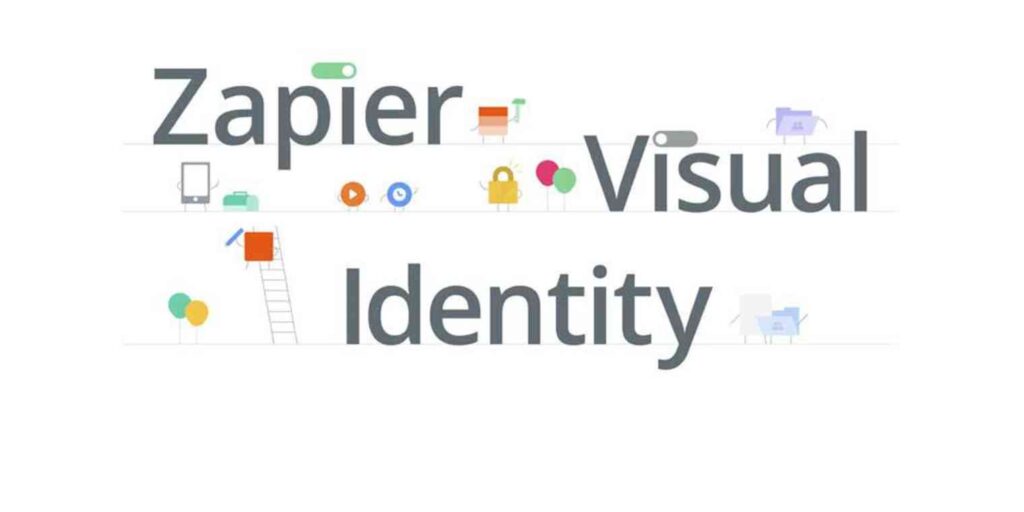
Zapier created a positioning and branding strategy that was memorable.
Their secret ingredients?
Positioning: Zapier positioned itself as the automation solution for busy professionals, saving them time and sanity in their work lives.
Tone of Voice: Friendly, witty, and easy to understand, making complex integrations feel like a walk in the park.
Brand Visuals: A vibrant and engaging visual identity that brought the joy of automation to life.
Zapier’s branding was the perfect blend of quirky and professional, with a brand voice that made users feel like they were chatting with a helpful friend.
Just take a look at some of their website copy:
“You’re 5 minutes away from your first Zap!”
“Zapier connects your work and makes you look like a hero!”
And their visuals?
Pure eye candy!
From their playful mascot, an orange robot named “Zapbot,” to their bold color palette of tangerine, lavender, and teal, every element was designed to make automation feel fun and approachable.
Even their product interface was playful, with friendly tooltips and celebratory messages that made users feel like they’d just won the automation lottery.
But Zapier’s branding wasn’t just about looks – it was about creating a sense of community.
They regularly showcased user stories and celebrated their customers’ successes, making everyone feel like they were part of something bigger.
Pricing 
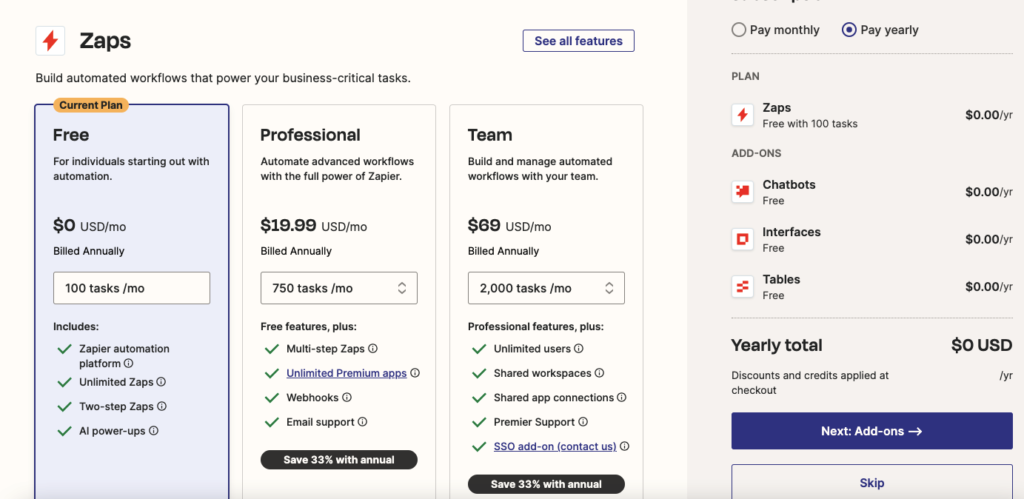
When it came to pricing, Zapier proved that you could attract users like bees to honey while still making money hand over fist.
Their secret?
A freemium pricing model that pulled users in like crazy.
First, they lured users in with a forever-free plan that gave them a taste of Zapier’s value.
With 100 tasks per month and 5 Zaps, it was the perfect way to get hooked on Zapier.
However, once users realized how much time and effort they were saving, upgrading to a paid plan was a no-brainer.
The paid plans were a smorgasbord of automation goodness, with juicy features like unlimited Zaps, premium apps, and customizable logic.
It was like upgrading from a tricycle to a Ferrari – you could go faster, further, and with a whole lot more style.
And with each new premium user, Zapier’s revenue soared higher than a rocket ship.
It’s like my grandma always said, “The best way to a customer’s heart is through their wallet!”
Acquisition 
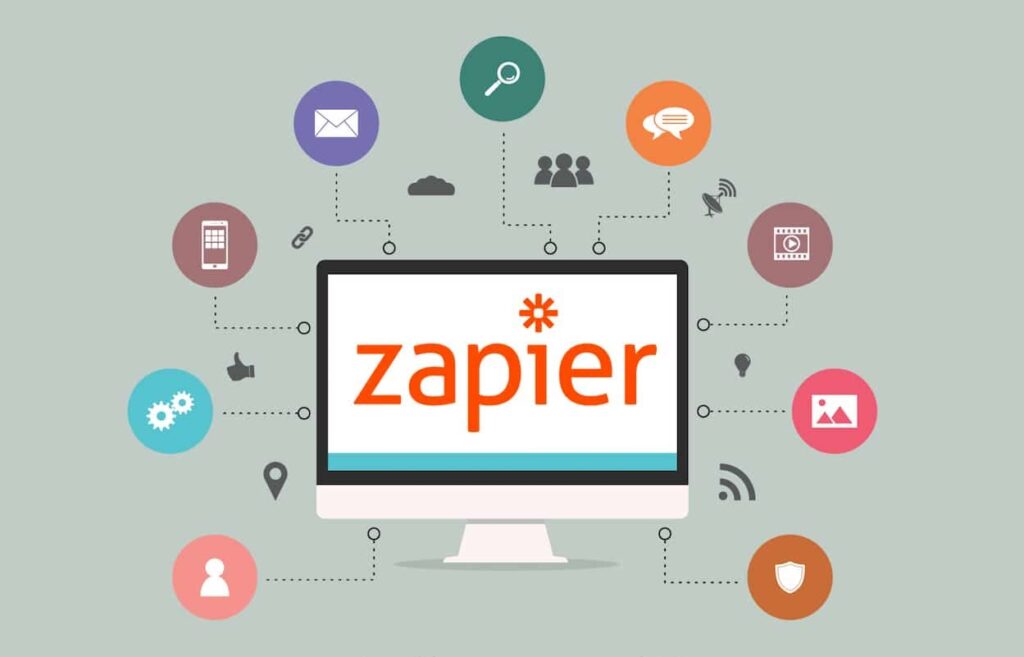
First stop, SEO Town! 
Zapier’s SEO game was so strong, they practically owned the search engine real estate. With 11.6 million organic search visits per month, they were the undisputed kings of keyword domination.
But how did they do it?
By creating not one, not two, but three types of landing pages for each integration:
- App profiles
- App-to-app integration pages
- Workflow-specific pages
When a new app joined Zapier, it created its SEO-optimized profiles page, and then Zapier programmatically created the app-to app and workflow page.
This trifecta of SEO goodness helped them rank for a mind-boggling 1.8 million keywords without having to create new pages themselves!
But Zapier didn’t stop there. They knew that backlinks were the rocket fuel that would skyrocket them to the top of the search results.
So, they leveraged their app partners to build 3.6 million backlinks from 19,175 unique domains.
And the best part?
Zapier’s app partners were more than happy to help because they knew that being featured on Zapier’s landing pages was like hitting the user acquisition jackpot.
But SEO was just the beginning.
Zapier also used paid search to boost their brand awareness, bidding on competitor keywords like “IFTTT” and driving 182,000 visits per month.
And let’s not forget about the power of referrals!
Zapier’s users were so in love with the product they couldn’t help but shout it from the rooftops.
In fact, referrals accounted for 40% of Zapier’s new user acquisition.
But the real secret to Zapier’s acquisition success?
Their affiliate program!
By partnering with bloggers, influencers, and online publications, Zapier was able to tap into new audiences and drive even more traffic to their website.
Growth Loops 
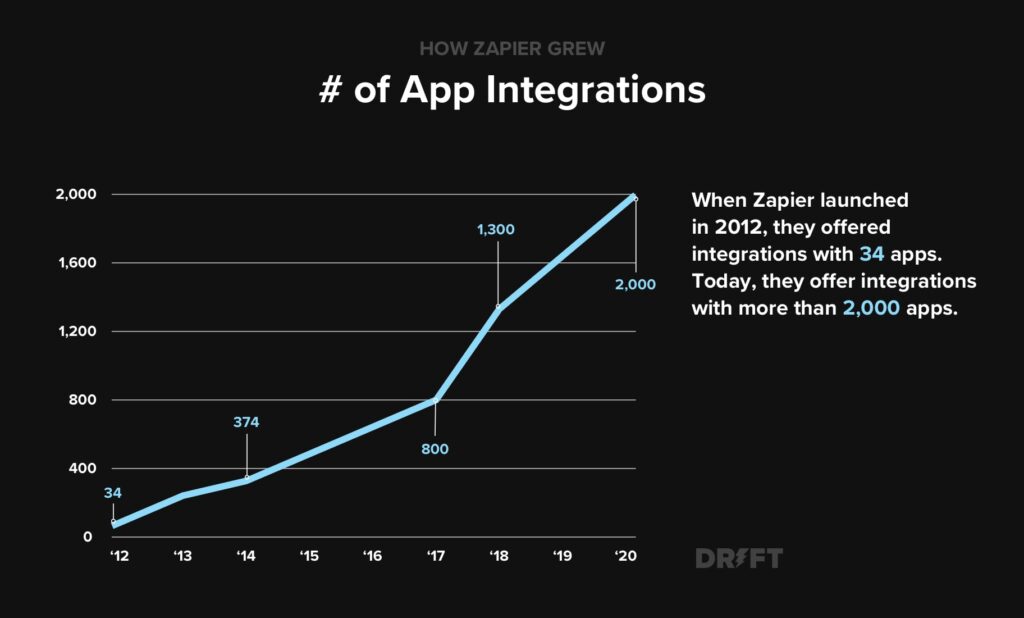
Zapier’s growth wasn’t just a one-time rocket launch – it was a perpetual motion machine fueled by three powerful growth loops.
1. 
• Zapier adds new app partners, expanding their integration offerings.
• More integrations attract more users, who discover Zapier through their favorite apps.
• More users mean more exposure for app partners, incentivizing them to promote Zapier.
• App partners drive even more users to Zapier, and the loop continues!
2. 
• Zapier creates landing pages for each new app, integration, and workflow.
• These pages rank high in search results, attracting organic traffic.
• More traffic means more users signing up for Zapier.
• More users lead to more app partners wanting to integrate with Zapier.
• More app partners mean more landing pages, and the SEO loop keeps spinning!
3. 
• Happy Zapier users can’t help but spread the word to their friends and colleagues.
• Referred users sign up for Zapier, and try Zapier’s automation.
• New users discover the value of Zapier and start referring others.
• More referrals bring in more users, and the referral rocket keeps soaring!
These three growth loops worked together in perfect harmony, propelling Zapier’s user acquisition to new heights.
It’s like the old saying goes:
“Give a Zapier user an automation, and they’ll be productive for a day. Teach a Zapier user to automate, and they’ll be a growth loop champion for life!”
Activation 
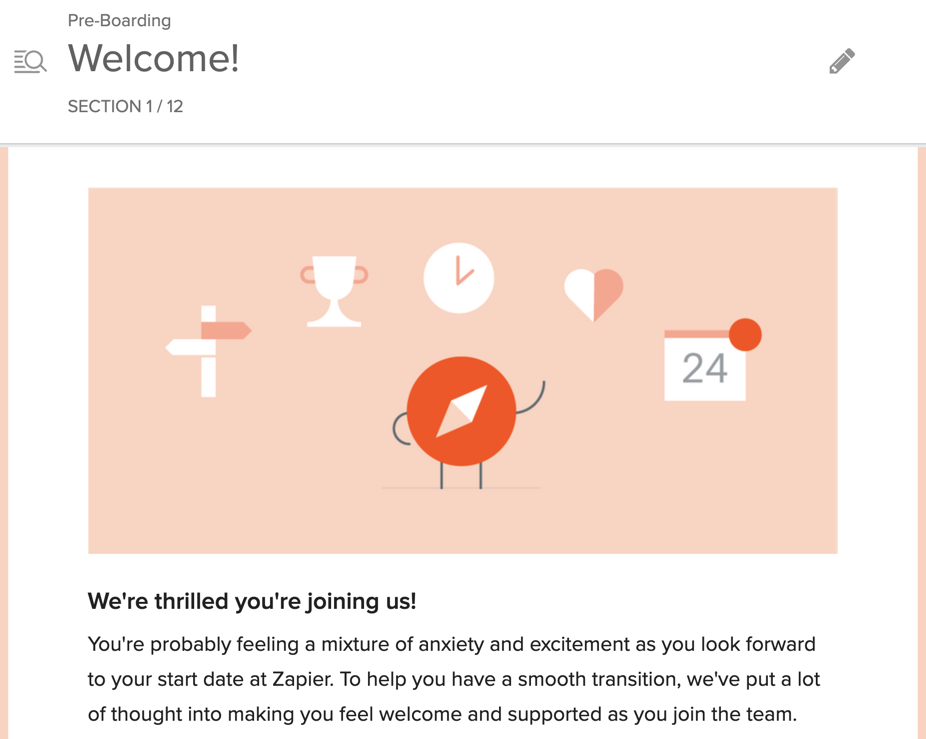
When it comes to user activation, Zapier has a secret weapon up its sleeve: pre-built Zaps.
These ready-to-use integrations are like a magic wand for new users, allowing them to automate their workflows faster than you can say “abracadabra!”
Zapier’s extensive library of pre-built Zaps covers a wide range of use cases, from simple two-step automations to complex multi-step workflows.
Whether you’re a marketer looking to streamline your lead nurturing process or a project manager trying to keep your team in sync, there’s a Zap for that.
The beauty of these pre-built Zaps lies in their simplicity.
Users can browse the library, find the integration they need, and customize it to their liking with just a few clicks.
No coding required, no headaches involved!
But Zapier doesn’t just rely on pre-built Zaps to activate users.
They also offer a guided onboarding process that helps new users discover the power of automation.
The results of this activation strategy are impressive:
- Over 1 million pre-built Zaps have been created by Zapier and its user community
- Pre-built Zaps have been used over 10 million times by Zapier users
- Users who use a pre-built Zap during onboarding are 3 times more likely to convert to a paid plan
Retention 
When it comes to retention, Zapier has a secret weapon that keeps users coming back for more: the power of habit.
You see, once a user sets up their first Zap and experience the magic of automation, they’re hooked.
It’s like a digital version of “set it and forget it” – the Zap runs in the background, making their work life easier without them even having to think about it.
But here’s the secret:
The more Zaps a user creates, the more deeply ingrained Zapier becomes in their daily workflow.
And that’s where the status quo bias comes into play.
Once a user has invested time and effort into setting up their Zaps, they’re unlikely to switch to another platform.
The thought of starting from scratch and recreating all those automations is enough to make anyone break out in a cold sweat.
But Zapier doesn’t just rely on the status quo bias to keep users around.
They also continuously add new features, integrations, and improvements to the platform, making it even more valuable to users over time.
And the best part?
Zapier’s retention strategy is hardwired into the very core of their product.
By providing a seamless, reliable, and ever-expanding automation platform, they’ve created a user experience that’s hard to walk away from.
The results speak for themselves!
- Zapier’s user retention rate is consistently above 90% month-over-month
- The average Zapier user creates 5 new Zaps in their first month and 10 new Zaps in their first year
- Over 50% of Zapier’s revenue comes from users who have been on the platform for more than a year
Referral 

By offering incentives like free Zapier credits to both referrers and new users, they’ve created a win-win situation that encourages word-of-mouth promotion.
To make referrals as easy as possible, Zapier provides built-in sharing buttons and pre-written social media posts, allowing users to spread the word about the platform effortlessly.
This seamless sharing experience has helped Zapier tap into new networks and expand its user base.
Although Zapier hasn’t disclosed specific data on the impact of referrals, the company’s founders have consistently emphasized the importance of word-of-mouth in their growth strategy.
 Lessons Learned: Zapier’s Blueprint for SaaS Success
Lessons Learned: Zapier’s Blueprint for SaaS Success 

From their early days as a startup to becoming a $5 billion automation powerhouse, they’ve left a trail of valuable lessons for aspiring entrepreneurs and growth professionals.
1. 
Zapier recognized the frustration of manual data entry and the complexity of API integrations.
By creating a user-friendly platform that simplifies automation, they addressed a significant pain point for businesses and individuals alike.
Lesson: Focus on solving a genuine problem with a straightforward and effective solution.
2. 
Zapier’s success is closely tied to its extensive partner ecosystem.
By collaborating with other SaaS companies and building a vast library of integrations, they’ve created a mutually beneficial network that drives growth for all parties involved.
Lesson: Build strategic partnerships to expand your reach, and unlock new growth opportunities.
3. 
By automating the creation of landing pages, they’ve established themselves as a go-to solution for automation and integration.
Lesson: Develop an SEO to drive organic traffic, build authority, and attract new users.
4. 
Zapier’s success isn’t just about acquiring new users; it’s about ensuring they experience the value of the platform quickly and stick around for the long haul.
By offering a smooth onboarding process, pre-built Zaps, and continuous improvement, they’ve mastered the art of activation and retention.
Lesson: Focus on delivering value to your users from day one and continuously iterate on your product to keep them engaged and loyal.
5. 
Zapier’s referral program has been a powerful growth engine, turning happy users into brand advocates.
By making it easy and rewarding for users to spread the word, they’ve tapped into the power of word-of-mouth marketing.
Lesson: Encourage and incentivize user referrals to create a viral loop that drives sustainable growth.
Wow, what a journey we’ve been on, exploring the incredible growth story of Zapier!
From their humble beginnings as a solution to a common pain point to becoming a $5 billion automation powerhouse, Zapier has truly changed the way businesses and individuals work.
So, take these lessons to heart, apply them to your own business, and who knows – maybe you’ll be the next Zapier, revolutionizing an industry and changing lives, one automation at a time.
If you’ve enjoyed this deep dive into Zapier’s incredible growth story, I’ve got a tiny favor to ask.
Could you take a moment to share this post with your friends, colleagues, and fellow SaaS enthusiasts?
It would mean the world to me and help spread the word about Zapier’s automation domination


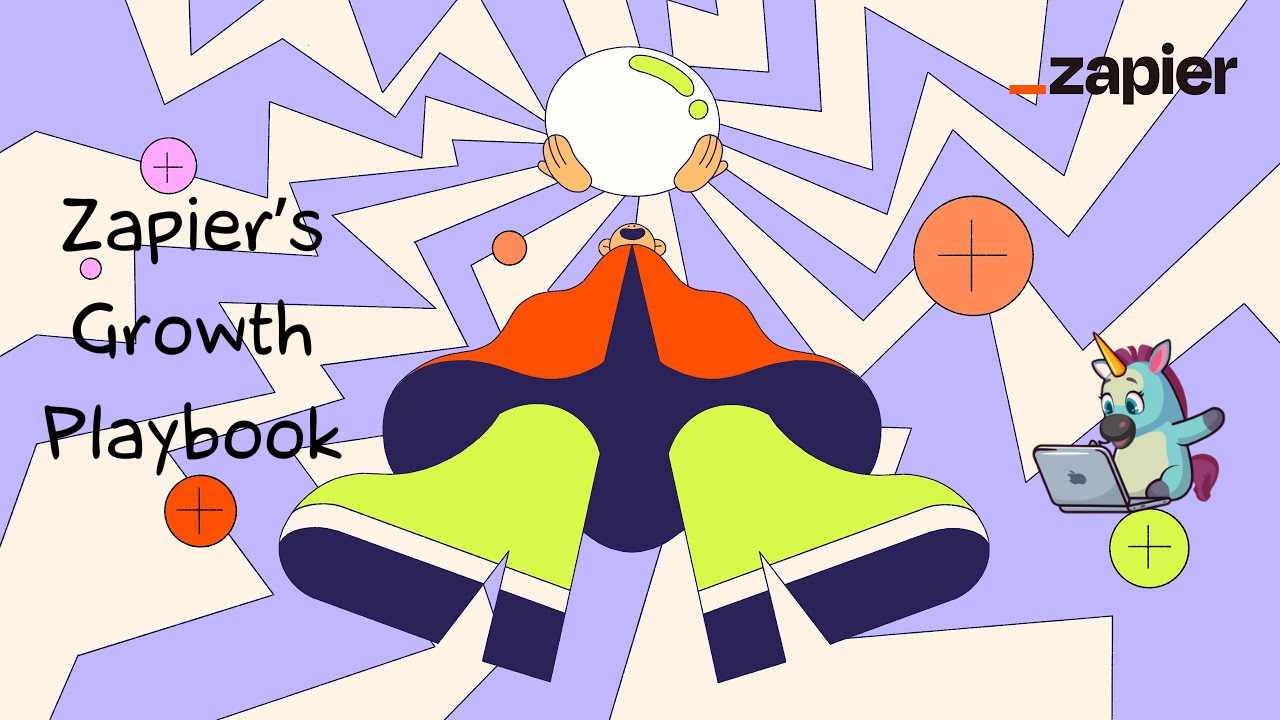








Leave a Reply